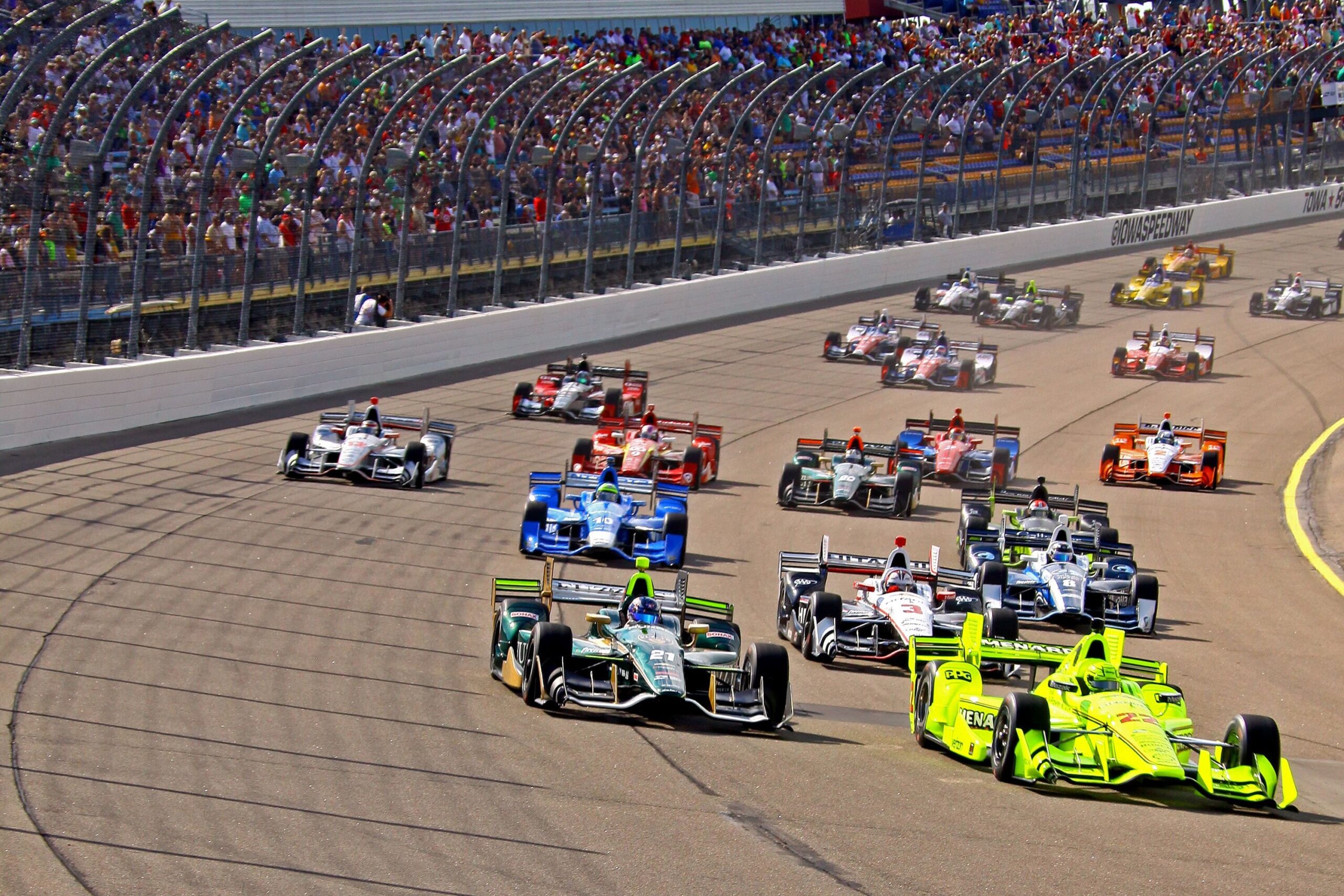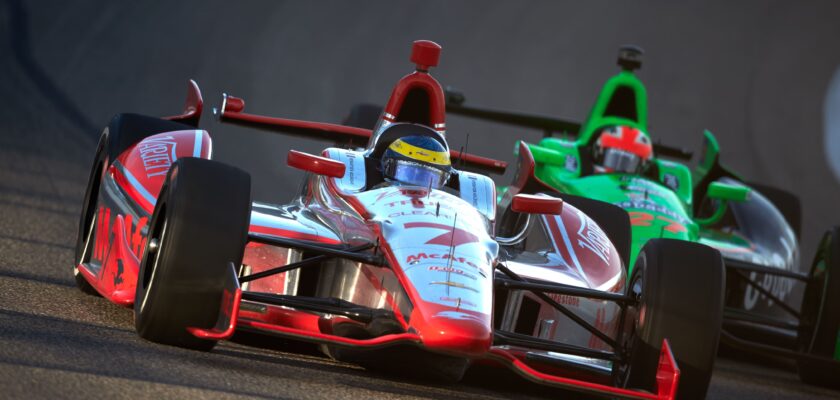Passionate about motorsport? Want to know more about one of the most exciting categories in the world? Stick around, this article is perfect for you. Let’s travel through the history, learn the rules, meet the main drivers and teams and more! Read all about IndyCar now!

Open your Betano account and get up to 1,000 reais in bonuses.
Payments via PIX, live games and super odds!
Click Here to open your account!
All about IndyCar: the origins of the sport
The IndyCar Series is the main high-speed racing category on four wheels in the United States. Its roots go back to the late 19th century, when the American Automobile Association (AAA) Championship Racing organized the first race in 1895;
The first championships were held in 1904, but it wasn’t until 1911 that the IndyCar Series really came to life, with the first edition of the Indianapolis 500.
Até 1978, a Fórmula Indy era regulada pela United States Automobile Club (USAC). Naquele ano, os proprietários das diversas equipes fundaram a Championship Auto Racing Teams (CART), que se tornou a entidade responsável pela organização anual dos campeonatos.
On March 11, 1979, the inaugural CART race took place on the Phoenix oval circuit in Arizona (USA). The first champion was American Rick Mears.
Although the IndyCar Series shares many similarities with its rival, Formula 1, it has some unique characteristics that set it apart, such as moving starts and the holding of several races on oval circuits, as well as specific differences in regulations.
Keep reading all about IndyCar!
All about IndyCar: differences to Formula 1
In the IndyCar Series, all the teams use the same chassis, supplied by Dallara, with a standard basic design;
In contrast, in Formula 1, each team is responsible for manufacturing its own chassis or buying from specific suppliers.
In addition to the difference in chassis, the engines of the Indy cars also differ. They are supplied by Honda and Chevrolet, and are V6 engines with a rev limit of 12,000 rpm, using E85 fuel. The power of these engines varies between 558 hp and 760 hp.
In Formula 1, engines are supplied by Ferrari, Renault and Mercedes. Honda supplied engines until the end of the 2021 season and is now focusing on research and development for sustainable and low-carbon energies;
Formula 1 engines are 90-degree V6s with a rev limit of 15,000 rpm and an estimated power of between 750 hp and 1,000 hp.
Another crucial difference between these categories is the scoring system:
In the IndyCar Series, all drivers score points – the winner receives 50 points, second place 40 points, third 35 points; from fourth to tenth place, the difference between the positions is 2 points, ranging from 32 (fourth place) to 20 points (tenth place);
From 11th to 24th place, the difference is 1 point (from 19 to 6 points), and riders finishing in 25th position or below receive 5 points.
Formula 1 qualifying for the races is divided into three phases called Q1, Q2 and Q3. All the drivers take part in Q1, and the five who record the slowest times are eliminated, starting Sunday’s race in positions from 16th to 20th;
The remaining 15 drivers compete in Q2 to try to secure one of the top 10 places and thus advance to Q3;
In the final phase of qualifying, Q3, the drivers compete for pole position and the best grid positions for Sunday’s race.
Keep reading all about IndyCar!
All about IndyCar: rules and regulations
Knowing the rules is fundamental to knowing everything about the IndyCar Series. The IndyCar Series season is made up of several stages, each with its own peculiarities;
The races are held on different types of tracks: short and long ovals, street circuits and permanent tracks;
The score is distributed according to finishing position, with additional points for pole positions and laps led.
Keep reading all about IndyCar!
All about IndyCar: the main drivers
When talking about the IndyCar Series, we can’t fail to mention the drivers who have marked the history of the category. Among the most notable are:
- A. J. Foyt: with four Indianapolis 500 victories and numerous titles, is an IndyCar legend.
- Rick Mears: another four-time winner of the Indianapolis 500, known for his skill on oval circuits.
- Mario Andretti: one of the most versatile drivers in the history of motorsport, winner of the Indianapolis 500 and Formula 1 champion.
- Dario Franchitti: with four IndyCar Series titles and three victories in the Indianapolis 500, he is one of the great modern names in the category.
- Helio Castroneves: known for his four victories in the Indianapolis 500, he is one of the most popular and successful drivers.
All about IndyCar: the main teams
To understand everything about the IndyCar Series, it’s important to know the main teams competing in the category:
- Team Penske: one of the most successful teams, with numerous victories and championships.
- Chip Ganassi Racing: known for its success in various motorsport disciplines, including the IndyCar Series.
- Andretti Autosport: Michael Andretti’s team, has a significant track record of success in IndyCar.
- Rahal Letterman Lanigan Racing: a team with a strong presence in the category, known for its consistent performance.
Continue reading all about IndyCar!
All about the IndyCar Series: progress and news
Knowing all about the IndyCar Series also involves getting to know the technology and innovation present in the cars. The cars are equipped with advanced aerodynamics, safety and telemetry systems;
IndyCar implemented the push-to-pass system in 2009 to increase the number of overtakes during races.
Activated by a button on the steering wheel, it allows drivers to temporarily increase the engine’s power, gaining an extra 40 hp;
In 2017, the rules were changed, giving each driver 200 seconds of additional power during the race, instead of a fixed number of uses.
All about the IndyCar Series: circuits and tracks
The diversity of circuits is one of the most exciting aspects of knowing all about the IndyCar Series. Races are held at:
- Ovals: like the Indianapolis Motor Speedway, famous for the Indianapolis 500.
- Street Circuits: like the Long Beach Grand Prix, held in the streets of the Californian city.
- Mixed circuits: like Barber Motorsports Park, which combines features of a street track and a permanent circuit.
Continue reading all about IndyCar!
All about the IndyCar Series: impact and popularity
The IndyCar Series is especially popular in the United States, but it also has a global fan base.
The races are broadcast to several countries, and the series is known for its competitive balance and accessibility for fans.
Due to its national character in the USA, Indy’s television audience is significantly smaller compared to Formula 1, which has a global reach;
In 2019, Indy recorded an average of 5.45 million viewers per race on all the channels affiliated with NBC, the category’s official broadcaster.
In contrast, Formula 1’s average audience in 2021 was 91.5 million globally, marking the highest figure since 2012;
However, both Indy and Formula 1 experienced a 9% increase in the number of viewers compared to 2018.
All about IndyCar: sustainability initiatives
In recent years, the IndyCar Series has invested in sustainability initiatives. This includes the use of biofuels, recycling programs and efforts to reduce the carbon footprint of events.
All about IndyCar: the future of IndyCar
With continued technological innovation, expansion into new markets and the inclusion of new talent, the IndyCar Series has a promising future.
The category is always looking for new ways to attract fans and improve competitiveness.
Did you enjoy learning all about the IndyCar Series? If you’re a motorsport fan, we recommend these texts:



